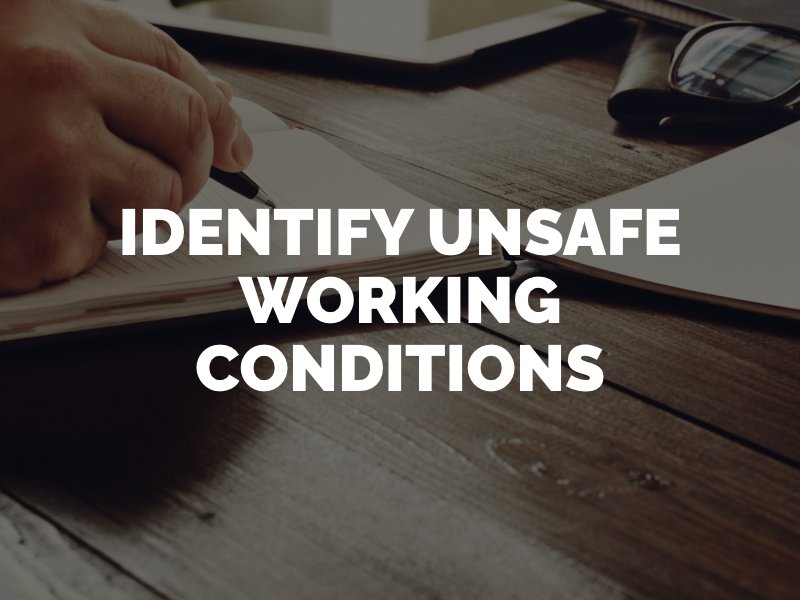Prevent an Accident By Identifying Unsafe Working Conditions
If you work full-time, you may be spending 40 hours or more in your place of employment. If the premises where you work contains hazards and injury risks, this greatly increases your odds of getting injured in a workplace accident. As a worker, you can improve the safety of your workplace by learning how to identify and report unsafe conditions.

How Common Are Workplace Accidents?
Despite the legal obligation that all employers have to ensure the reasonable safety of work environments, thousands of workers sustain serious and life-changing injuries on the job each year. According to the U.S. Bureau of Labor Statistics, 504 workers lost their lives in workplace accidents in California in 2022. This was the highest death toll over the last decade. Nationwide, 5,486 worker deaths were reported in 2022.
What Are Examples of Unsafe Working Conditions?
An unsafe working condition refers to something that puts workers at an undue risk of injury. It is a risk that should not exist in a safe and properly maintained work environment. Unsafe working conditions typically develop when one or more parties are negligent or fail to act with reasonable care.
While types of workplace hazards vary based on the industry and nature of the job, common examples include:
- Faulty equipment
- Machinery malfunctions
- Missing machine guards
- Slippery floors or uneven surfaces
- Poorly trained workers
- Irresponsible or reckless workers
- Violated safety protocols
- A lack of personal protective equipment
- Poor ergonomics (repetitive motion injury risks)
- Electrical hazards
- Exposure to asbestos or other hazardous substances
- Excessive noise
- Negligent premises security
Work injury statistics show that the most common causes of worker injuries and deaths in California are transportation accidents, exposure to harmful substances or environments, violence by persons or animals, and slip and fall accidents.
What Laws Are in Place Regarding Workplace Safety?
Even if the nature of a job is dangerous, such as construction work, safety laws and regulations exist to promote worker well-being. The California Occupational Safety and Health Act of 1973 protects workers from unsafe working conditions. This law requires employers to provide “safe and healthful” places of employment. This means workplaces that are free from danger to a worker’s life, safety or health.
Employers have a responsibility to periodically assess work environments for potential hazards. They must provide ongoing training to their workers on how to follow safety protocols. California law protects everyone in the workplace other than independent contractors and household domestic services workers. It offers enhanced protections regarding exposure to chemicals, concrete and masonry dust, as well as high-rise window cleaners and mining and tunneling workers.
How to Report an Unsafe Working Condition
While it is ultimately an employer’s duty to ensure a safe workplace, workers can enhance their safety by being vigilant. If you notice any unsafe working conditions, report them to your employer right away. If your employer does nothing to remedy the risk, file a complaint with a safety organization such as the Occupational Safety and Health Administration.
Reporting an unsafe working condition could save a life. Refuse to continue working for the employer until the dangerous condition is fixed. You are within your legal rights to refuse to work until the matter is resolved without fear of retaliation by your employer. If you lose your job or are demoted for reporting an unsafe working condition, contact our Los Angeles workers’ compensation attorney about a potential retaliation lawsuit.
